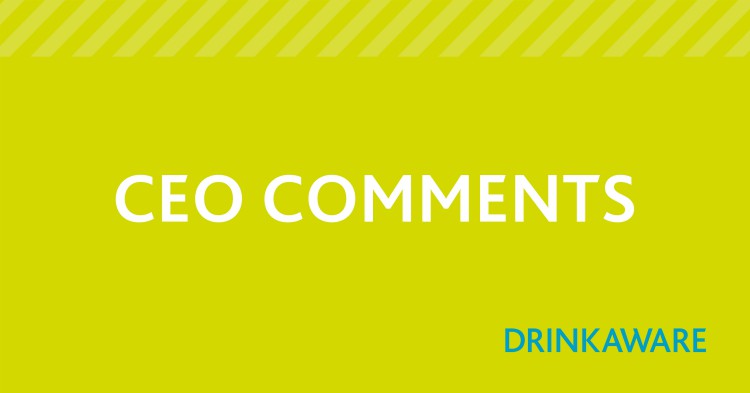Our persistent pursuit of simplicity means we like things to be black and white. We like to know when we’re sick and when we’re healthy. We see things as good or bad, always or never, right or wrong. And we like to categorise people and our behaviours in a similarly simplistic way. The thing about this is that like the Figure/Ground Illusion, it means we can only see one or the other, not both simultaneously.
But I’m afraid we live in a grey world and that’s where the truth usually resides – despite our natural reticence for nuanced thinking.
Why is this relevant to alcohol? Well because there’s a danger that we view Irish drinking as an either / or problem. Either you do drink too much or you don’t. Either you’re at risk, or you’re not.
Around St Patrick’s Day we talked about creating a new alcohol archetype and changing the Irish drinking narrative. Now with the latest data on women we have a new and disturbing female stereotype emerging, as evident in the increasing volume of media commentary on the subject.
I’m not for one minute disputing that this is a problem, and both anecdotally and data-wise we can corroborate this. But there is a danger of missing an important point if the media focus is on the shocking stories of girls and women, when in fact of the 2.8 million adults in Ireland who drink, it is men across all age cohorts who have more difficulties with alcohol consumption.
It is worth noting, that the latest HRB data refers to the 7,350 people who are presenting for treatment: Of these they cite 72% of whom are ‘alcohol dependent’; 16% ‘harmful drinkers’; and 10% ‘hazardous drinkers’ – all World Health Organisation AUDIT analysis terms.
It’s important that these three terms here are clarified, because to the man or woman on the street the three descriptions are almost inter-changeable in meaning, when in fact they refer to distinct increasing degrees of risk:
Hazardous (10%) means “a pattern of alcohol use that increases the risk of harmful consequences for the user. The term describes drinking over the recommended limits by a person who has no apparent alcohol-related health problems. Includes experimental drinking”.
Harmful (16%) means “a pattern of use that results in damage to physical or mental health; can include negative social consequences”.
Dependent (72%) “Typically, includes a strong desire to consume alcohol, impaired control over its use, persistent drinking despite harmful consequences, a higher priority given to drinking than to other activities and obligations, increased alcohol tolerance. Also notably a physical withdrawal reaction when alcohol use is discontinued”.
All 7,350 presenting for treatment sit in one of the above groups but only 10%, are not currently experiencing harm or alcohol dependency. For the majority, with an already entrenched problem, treatment and remedy will inevitably be much harder. In addition, 67% of new cases (i.e. those who have never been treated for problem alcohol use before) were classified as alcohol dependent.
The broader societal significance here, is that lack of recognition, or even blatant denial, can mean people only seek help when there’s already a serious problem. Loop back to the over-simplification point and if we continue to ignore or overly simplify alcohol consumption by extremes (i.e. those who abstain and those who are dependent) then we fail to recognise where potential issues may be lurking.
This is why Drinkaware’s Index 2018 is helpful. As comprehensive segmentation research that uses the same WHO AUDIT profiles as the HRB’s study, it analysed Ireland’s drinking population in terms of age, gender, behaviour and attitudes.
It identifies the 592,000 Hazardous and of increasing risk drinkers that make up 21% of the drinking population as pre-dominantly male and under 34 years of age. It also reveals a larger cohort of 23% of drinkers overall, 625,000 in number, whose behaviours and attitudes make them border-line Hazardous drinkers though they currently sit in the Low Risk category, while they are also at potential risk. And the majority here are age- and gender-neutral.
One of our jobs at Drinkaware therefore, is to help people to understand how and why they drink, and to think about, and act to mitigate, the risks regarding their own behaviours and attitudes towards alcohol.
Ultimately, we encourage people to go to that grey area to take a realistic and hard look at themselves. It’s not easy. But then great things never come from comfort zones.


